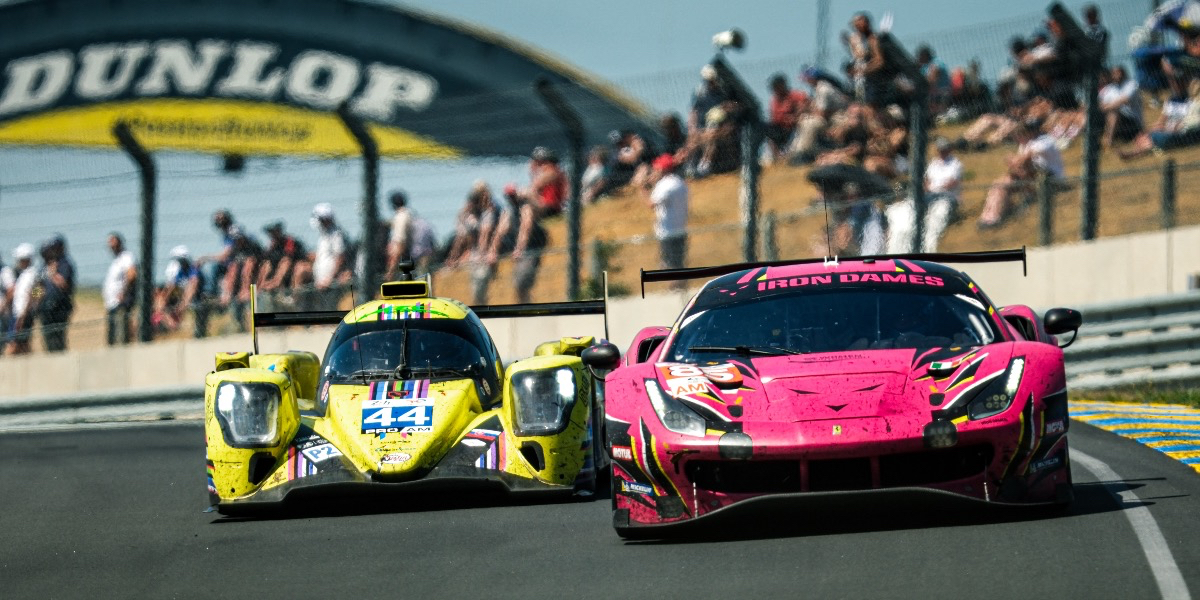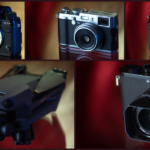
The need for speed
Posted on Oct 4, 2022
Fast-moving action presents a stern test for any camera, but motorsport photographer Jeff Carter knows that X-H2S is up to the challenge
Advertisement feature
Jeff Carter’s life moves as fast as the action he photographs. When we talk, the globetrotting motorsport snapper had just returned from a European Le Mans series race in Spain and was due back on a plane less than 24 hours later, heading to the latest leg of the FIA European Historic Rally Championship. Unsurprisingly, he needs his cameras to keep up with him. He’s been using Fujifilm X Series kit for almost a decade, and the recently introduced X-H2S has got his pulse racing. “It’s mind-blowing how good it is,” he tells us. “The autofocus will track a car coming towards you and shoot at 40fps. If I shoot a three-second burst – 120 frames – every frame, bar one or two, will be sharp.”
For Jeff, it’s a real coming-of-age moment for Fujifilm’s mirrorless system. His X Series journey began in 2013 with the X-Pro1, which he used as a ‘pit-lane walkabout’ with a series of prime lenses. Like many early converts, the colours and functionality appealed; so much so, that when the X-T1 arrived a year later, he sold his entire Nikon kit and switched over. As lenses were added and the system grew, so did his confidence in the series. Models like X-T4, and now X-H2S, have cemented his belief that he made the right decision. “When I got the X-T1, I was the only person trackside with a mirrorless camera – now everyone’s got them,” he smiles. “I used to get mocked for having a camera with a flip-out screen, but when you’re working in the pit lane, you can’t lay down. I could get a different perspective.”
Crucially, this latest incarnation of X Series has stayed true to its roots. The X-Trans CMOS 5 HS sensor still delivers the colours Jeff wants, while the analogue functionality remains intact – but performance has been boosted. “The camera takes a CFexpress card and that’s a step up – I save Raws to the CFexpress and JPEGs to an SD card. With the X-T4, you get 35 Raws before it starts slowing down. X-H2S doesn’t slow down. I get a continuous burst with cars off the start line, no problem.”
While the headline figures for X-H2S are sure to grab attention, it’s some of the more subtle tweaks that also stand out for Jeff. Returning to the autofocus performance, he acknowledges how custom AF modes have been vastly improved. “I use the custom AF settings to track accelerating/decelerating subjects or to ignore obstacles passing in front of the camera,” he tells us. “Those functions have improved with each generation. It’s good enough to use professionally. ISO performance is good, too,” he continues. “I will happily shoot with X-T4 at 6400, but with X-H2S I’ll go to 12,800 and won’t worry about it.”
Like many photographers, video is becoming an essential part of Jeff’s working life, and the X-H2S has much to offer. He’s already bought a cage and monitor and is sold on the AF performance with video. However, it’s the 6K resolution that holds real appeal. “Everything I shoot is output at 1080p, so if I record at 6K, I can crop in, moving within the frame. I can make it look like I’m panning the car within the frame!”
With an X-H2S already part of his kit, Jeff will add another body in due course, using his ‘standard’ XF200mm f/2 lens on one, and an XF16-55mm on the other. “You can spend all day on image, and another two getting it right in Photoshop, but I can’t do that. I need to have 100 images on a website within ten minutes of a session – X-H2S makes that possible.”
For more information, visit Fujifilm’s website.
Appears in Issue 101 of Photography News. Read the full publication here.
Don’t forget to sign up to receive our newsletter below, and get notified about the new issue, exclusive offers and competitions.
Have you heard The Photography News Podcast? Tune in for news, techniques, advice and much more! Click here to listen for free.




